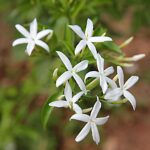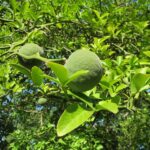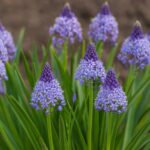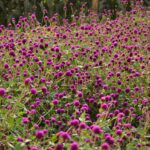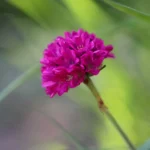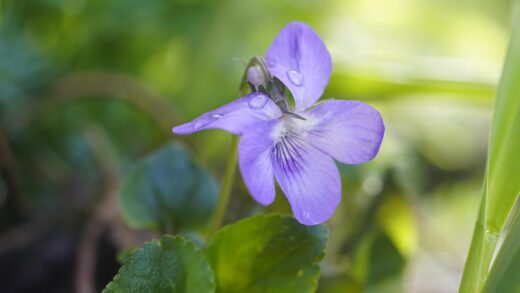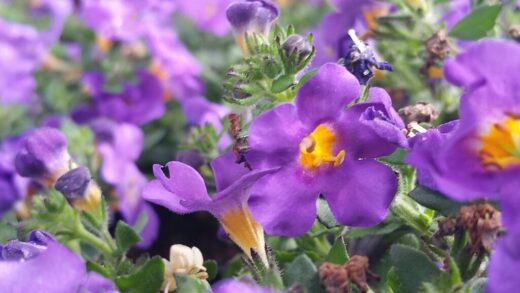The African Daisy, also known as the Cape Marigold, is a stunning and vibrant annual or short-lived perennial native to the sunny regions of South Africa. Its brilliant, daisy-like flowers boast shades of orange, yellow, salmon, and white, often with a darker central ring that further enhances their appeal. To ensure these plants grace your garden to their fullest extent and for as long as possible, proper care is essential, and careful pruning and cutting back are an integral part of this. Many might not even consider how important these horticultural interventions are, even for such a seemingly simple plant, in maintaining its blooming enthusiasm and overall plant health.
The African Daisy typically has a low, bushy growth habit, usually growing 15-30 centimeters (approximately 6-12 inches) tall and reaching a similar width. Its leaves are narrow, lance-shaped, or lobed, often slightly hairy, which helps the plant tolerate drier conditions. The flowers open in their full glory under the influence of daylight and close on cloudy days or towards the evening, which is an interesting and dynamic characteristic of this species. This phototropic behavior, as well as its tendency for continuous blooming, makes it truly valuable in gardens, but it is precisely for the latter reason that regular human intervention is necessary to maximize the blooming period.
The African Daisy’s Development Cycle and Its Connection to Pruning
The life cycle of the African Daisy greatly depends on cultivation conditions and the specific climate; in cooler climates, it is usually grown as an annual, while in areas with milder winters, it can also survive as a short-lived perennial. It is easily propagated from seed, and the seedlings develop relatively quickly, capable of blooming within a few months of sowing under favorable conditions. The plant’s main blooming period typically lasts from late spring to early autumn, but this period can be significantly extended with proper care, especially by removing spent flowers. Pruning, therefore, is not just an aesthetic matter but a conscious intervention in the plant’s biological cycle to stimulate flower production.
To maintain the blooming tendency, it is crucial to understand that leaving spent flowers on the plant redirects its energy towards seed formation. As soon as the plant perceives it has been successfully pollinated and can mature seeds, it reduces the resources allocated to forming new flower buds. By regularly removing withered flower heads, i.e., with the “deadheading” technique, you can trick the plant, giving it the impression that its reproductive attempt has not yet been successful, thus stimulating it to further blooming. This constant care ensures that the African Daisy focuses its energy not on ripening seeds, but on creating ever new colorful flowers, thereby extending its decorative time in your garden.
The plant’s natural bushy growth habit means that drastic shaping pruning is usually not necessary, but in certain cases, pinching young plants can promote denser, more compact growth. If the plant develops overly long, leggy stems, a light cutting back can help revitalize it and stimulate the formation of new shoots. It is important to note that the African Daisy is relatively sensitive to excessive moisture and poor air circulation, so pruning can also play a role in ensuring adequate foliage ventilation, thereby reducing the risk of fungal diseases. A healthy, well-cared-for plant is also more resistant to pests and diseases.
More articles on this topic
Pruning the African Daisy is, therefore, a multifaceted task that includes removing spent flowers, controlling growth, and maintaining plant health. These interventions, although they may seem simple, contribute significantly to the plant blooming as beautifully and for as long as possible. In the following chapters, we will detail exactly why, when, and how it is advisable to perform these important horticultural operations, so that everyone can get the most out of this wonderful South African guest. Conscious care is rewarded with an abundance of flowers and plant vitality.
Why Is Pruning the African Daisy Necessary?
The primary and most frequently mentioned goal of pruning the African Daisy is to promote continuous and abundant blooming. As with many other flowering plants, removing withered flower heads, so-called “deadheading,” prevents seed formation. If the plant dedicates energy to ripening seeds, it has fewer resources left for developing new flower buds. Through this simple but regular intervention, you encourage the plant to focus its attention and energy on creating new flowers, thereby significantly extending the blooming season and increasing the number of flowers.
Pruning not only stimulates blooming but also contributes to maintaining the plant’s overall health and vigor. Removing dry, damaged, or diseased plant parts is crucial for preventing the spread of diseases and reducing the potential establishment of pests. A plant with clean, well-ventilated foliage is less prone to fungal infections, which can be a problem especially in humid, warm weather. Pruning improves air circulation within the plant, which helps keep leaves and stems dry, thus creating a less favorable environment for pathogens.
In certain cases, pruning can also serve to shape the plant and control its size. Although the African Daisy usually has a compact growth, it can happen that some shoots become too long or the plant takes on a less aesthetic form. In such situations, a light pinching or cutting back can help achieve the desired habit and make the plant denser and bushier. This can be particularly important for container growing or in mixed flower beds, where harmony between plants and an orderly appearance are priority aspects.
More articles on this topic
Last but not least, pruning can also function as a kind of rejuvenation treatment, especially mid-season, if the plant’s blooming enthusiasm seems to wane or if the foliage is somewhat tired. A more vigorous cutting back can then stimulate the African Daisy to new growth and a second blooming, giving it a fresh boost for the rest of the season. This method can be particularly useful in regions where the plant behaves as a perennial, helping it prepare for the next growth cycle or simply ensuring a tidier appearance before the dormant period.
The Optimal Time for Pruning
The success of pruning work largely depends on the right timing, as the plant reacts differently to interventions at its various developmental stages. In the case of the African Daisy, the most important and frequent pruning task is the regular removal of spent flowers, which you should do continuously throughout the entire blooming season, from late spring to early autumn. As soon as a flower head begins to lose its petals and wilt, it is advisable to remove it immediately so that it does not take energy from the plant. This constant attention ensures the richest blooming.
For young plants, to promote denser, bushier growth, it is advisable to perform so-called pinching in the first few weeks after planting. This means shortening the tips of the main shoots, which stimulates the plant to form side shoots. This intervention is recommended before blooming begins, so as not to negatively affect the initial floral splendor. The result of pinching is a more compact plant with more flowers, which better fills the available space.
If the plant becomes a bit tired mid-summer, its blooming wanes, or its stems become too long and leggy, a more vigorous cutting back may also be justified. You should generally perform this rejuvenation pruning mid-summer, in July or early August. Then you can cut the plant back by as much as half or two-thirds, which stimulates it to form new shoots and a second blooming. It is important that enough time remains before the end of the season for the plant to regenerate and bloom again.
You should avoid pruning in late autumn or before the onset of frost in areas where the African Daisy attempts to overwinter as a perennial. Late pruning can stimulate the formation of new, tender shoots that are extremely sensitive to cold and can easily freeze, thereby weakening the entire plant. If the plant is treated as an annual, it can simply be removed from the flower bed after the autumn frosts, in which case no further pruning is necessary. Timing is, therefore, crucial for maximizing the plant’s health and blooming potential.
Necessary Tools and Preparations
For pruning the African Daisy, a complicated or expensive arsenal of tools is not necessary; however, using the right instruments considerably facilitates the work and is gentler on the plant. The most important thing is that the cutting tool you use is always sharp and clean. Dull blades crush plant tissues, which leads to slower wound healing and increased susceptibility to diseases. A sharp cut, on the other hand, leaves a clean cutting surface that closes quickly.
For removing spent flower heads (deadheading) and for pinching thinner shoots, good quality, sharp pruning shears or special flower snips are usually most suitable. These smaller shears allow for precise work without damaging the surrounding healthy plant parts. For cutting back thicker, more woody stems, although this occurs less frequently with the African Daisy, stronger pruning shears (secateurs) may be necessary. You should always ensure that the size and type of tool correspond to the thickness of the plant part to be cut.
Keeping tools clean is extremely important for preventing the spread of plant diseases. Before and after each use, especially when moving from one plant to another, it is recommended to disinfect the blades of the shears. For this purpose, you can use denatured alcohol, hydrogen peroxide solution, or even a diluted solution of household bleach. In addition to regular cleaning and disinfection, you should not forget the occasional sharpening of the shears to always ensure optimal cutting performance.
Before you start pruning, it is advisable to carefully inspect the plant and plan which parts you want to remove or cut back. Observe the spent flowers, any possibly damaged or diseased leaves, stems, as well as the general shape and density of the plant. Prepare a collection container for the cut plant parts, so you can easily compost or dispose of them at the end of the work. With proper preparations, pruning will be faster, more efficient, and also gentler on the plant.
Pruning Techniques for the African Daisy
When caring for the African Daisy, you can apply several different pruning techniques, depending on the goal of the intervention. These techniques can range from the simple removal of withered flowers to cutting back that shapes or rejuvenates the plant. Each method has its place and time in the plant’s life cycle, and their correct application can significantly improve the quality of blooming and the overall condition of the plant. The most important thing is to always work with sharp and clean tools, so that the cuts are clean and the plant can regenerate quickly.
The most frequently used and perhaps most important technique is the removal of spent flowers, or “deadheading.” This operation consists of removing the withered, faded flower heads along with their stems. You should usually make the cut just above the first healthy pair of leaves or side shoot below the withered flower. In this way, not only is seed formation prevented, but the plant is also stimulated to develop new flowers, while at the same time ensuring a tidier, more aesthetic appearance. It is recommended to perform this operation regularly during the blooming season, even every few days.
Pinching is another useful technique, primarily used on young plants to promote bushier growth. This involves shortening the tips of the main or side shoots, usually between your fingers or with small scissors. Removing the apical part stimulates the plant to develop new side shoots from the dormant buds below, so the plant becomes denser, more compact, and produces more flowering stems. Pinching is advisable at the beginning of the growth period, before blooming starts, so that the plant has time to form new shoots.
Cutting back is a more vigorous form of pruning used when the plant has become too leggy, bare at the base, or when its blooming enthusiasm has significantly decreased mid-season. In this case, you can cut the plant’s stems back by as much as half or two-thirds, making sure to leave leaves and buds on it from which it can regrow. This more drastic intervention results in a kind of rejuvenation, stimulating the development of new, vigorous shoots and a more abundant second blooming. It is important that after cutting back, the plant receives an adequate amount of water and nutrients for recovery.
Care After Pruning and Additional Tips
After performing pruning work, proper aftercare of the African Daisy is crucial for rapid recovery and continued abundant blooming. Immediately after pruning, especially if a more extensive cutting back has been done, it is advisable to consider watering the plant if the soil is dry. This helps the plant compensate for any water loss and supports the initiation of new shoot growth. However, you must be careful not to overwater the plant, as the African Daisy does not like stagnant water.
After pruning, especially after a more vigorous cutting back, the plant may have an increased need for nutrients for the formation of new shoots and flowers. In this case, it is advisable to support its growth with a balanced, liquid fertilizer that stimulates blooming. You should choose a preparation with a higher phosphorus and potassium content, as these elements are essential for flower formation. Fertilization is carried out according to the instructions on the packaging, avoiding excessive nutrient intake, which can damage the roots.
In the weeks following pruning, carefully monitor the plant’s reaction to the intervention. Observe the appearance of new shoots, the color of the leaves, and the general condition. If the plant recovers slowly or if the leaves begin to yellow, it is advisable to reassess watering and nutrient supply practices. Any pests or disease symptoms that appear should be treated immediately so as not to further weaken the freshly pruned plant.
Finally, a few general tips: always use clean and sharp tools for pruning to minimize the risk of infection and damage to plant tissues. Regular removal of spent flowers is the most effective way to maintain continuous blooming. Also, do not be afraid of a more vigorous cutting back mid-season if the plant’s condition justifies it, as this often revitalizes the African Daisy. Careful pruning and subsequent attention ensure that this sun-loving beauty will reward you with long-lasting floral splendor in your garden.







